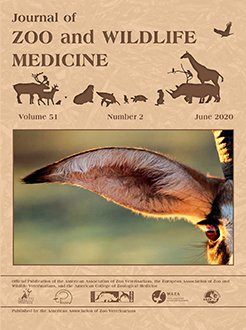Cardiac disease has been recognized as a major cause of death in captive nonhuman primates, which necessitates diagnostic (imaging) techniques to screen for and diagnose preclinical and clinical stages of possible cardiac conditions. Echocardiography is currently the most commonly used diagnostic tool for evaluation of cardiac anatomy and function. Complete with thoracic radiography and blood levels of two cardiac biomarkers, N-terminal probrain natriuretic peptide (NT-proBNP) and cardiac troponin T (cTnT), it gives an extensive examination of the cardiorespiratory system. The purpose of this cross-sectional cohort study is to describe normal thoracic anatomy using thoracic radiography, and to provide normal values for echocardiographic measurements in 20 ring-tailed lemurs (Lemur catta). Additionally, cardiac biomarkers were determined. Three radiographic projections of the thoracic cavity and a complete transthoracic echocardiography were performed in 20 clinically healthy ring-tailed lemurs during their annual health examinations. Similar standard right parasternal and left apical echocardiographic images were obtained as described in dogs and cats and normal values for routine two-dimensional (2D-), time-motion (M-) and Doppler mode measurements were generated. Furthermore, a noninvasive smartphone base ECG recording and blood concentrations of cardiac biomarkers were obtained. Other radiographic measurements are provided for the skeletal and respiratory systems such as the trachea to inlet ratio and tracheal inclination. Knowledge of the normal radiographic thoracic and echocardiographic anatomy and function are fundamental for the diagnosis and follow-up of cardiac disease in affected individuals and for species screening, and will be of added value in future research in and conservation of this endangered species.
How to translate text using browser tools
12 June 2020
THORACIC RADIOGRAPHY AND TRANSTHORACIC ECHOCARDIOGRAPHY IN CLINICALLY HEALTHY RING-TAILED LEMURS (LEMUR CATTA)
Blandine Houdellier,
Laurent Locquet,
Jimmy H. Saunders,
Bart J.G. Broeckx,
Tim Bouts,
Pascale Smets
ACCESS THE FULL ARTICLE
Cardiac biomarkers
echocardiography
Lemur catta
radiography
ring-tailed lemurs
thorax





